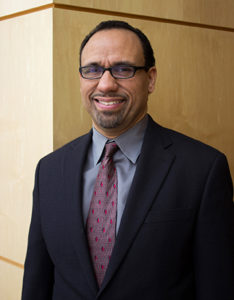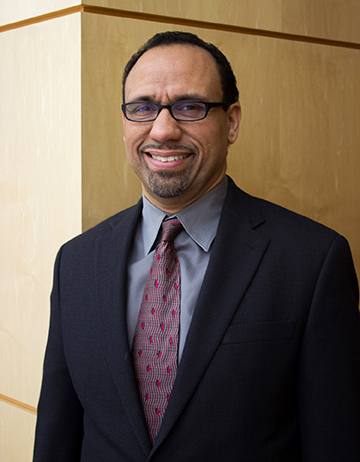Guest lecturer discusses slavery and the bible

Society often asks questions such as, “How does situation X relate to the Bible?” On Oct. 9 in the Harold and Jean Lambert Recital Hall, Dr. Emerson Powery, a professor of biblical studies at Messiah College, tackled the topic of slavery and how it relates to the Bible.
The presentation closely aligns with Powery’s co-authored publication, “The Genesis of Liberation: Biblical Interpretation in the Antebellum Narratives of the Enslaved.” He uses resources from people such as Frederick Douglass and Harriet Jacobs. This gives the reader a perspective of the slaves instead of only the slaveholders.
In his presentation entitled “Reading the Bible in an Age of Protest,” Powery continuously inserted quotes from people who were formerly enslaved to represent his or her point of view. He explained to the audience that, although the Bible mentions slavery, a multitude of interpretations can be made on any single verse.
Powery made it clear that slavery in the Bible may have been completely different from slavery in the 19th century. One example is Hagar, a female slave of Sarah, Abraham’s wife. The story of Hagar is often used in comparison with slave narratives, which are primary sources written by someone who was formerly enslaved.
Another example Powery gave was the Curse of Ham. In this story, Noah drank too much wine and lay uncovered inside of his tent. Ham, one of his sons, told his two brothers about the incident instead of helping his father. Noah decided to curse Canaan, Ham’s son, and forced him to be a slave.
Harriet Jacobs is one of many former slaves who has questioned this story. Jacobs, who did eventually escape slavery, wrote an autobiographical novel entitled “Incidents in the Life of a Slave Girl.” It was difficult for her to understand why a certain group of people would be related to Ham and punished for his wrong-doing.
In Powery’s “The Sabbath and the Freedom Narrative,” two types of slaveholders are described. Some believed that religion would help the slaves and give them a more positive outlook on life. On the other hand, Powery claimed that many of the slaveholders would not even let their slaves “hold the book” because they believed that African Americans “had no souls.”
As an audience, our job was to interpret the difference in the slaves of the Bible and those of the 19th century. One common question that is repeatedly asked deals with slavery in the Bible and whether it was used as a form of punishment to those who had disobeyed or broken a rule or law.
By incorporating slave narratives into the presentation, Powery allowed the audience to see slavery through the slaves’ eyes. The presentation left the audience with new ways of thinking as well as an urge to research the topic further.

